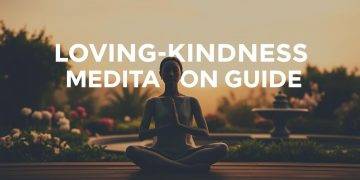Did you know that the beliefs you hold can either be the biggest obstacle or the greatest catalyst for achieving your goals? Our behaviors are fundamentally shaped by our beliefs, which act as working generalizations that stand true over time.
For instance, a belief that “I cannot wake up early in the morning” can become a self-fulfilling prophecy, even if you’re capable of changing your wake-up time. The belief upgrade technique offers a powerful methodology to transform such limiting perspectives into empowering ones.
By understanding how beliefs shape our experiences and learning techniques to identify, challenge, and upgrade them, you can unlock your full potential.
Key Takeaways
- Discover how beliefs influence your behaviors and outcomes.
- Learn techniques to identify and challenge limiting beliefs.
- Understand the process of upgrading beliefs for personal growth.
- Explore the role of Neuro-Linguistic Programming (NLP) and cognitive psychology in belief modification.
- Gain a toolkit for systematically replacing limiting beliefs with empowering alternatives.
Understanding the Power of Beliefs
The beliefs we hold dear have the capacity to either liberate or limit our potential. Our beliefs are the lenses through which we perceive reality, influencing our thoughts, emotions, and actions. They are deeply ingrained in our psyche, often operating beneath the surface of our conscious awareness.
To grasp the significance of beliefs, it’s essential to understand how they shape our reality. Beliefs act as a filter, determining what we consider possible or impossible. They influence our perceptions, decisions, and ultimately, the outcomes we experience in life.
How Beliefs Shape Our Reality
Beliefs have a profound impact on our reality. They can empower us to achieve great things or hold us back from realizing our full potential. For instance, a person who believes in their ability to learn and grow is more likely to take on challenges and succeed. On the other hand, someone with limiting beliefs may shy away from opportunities due to self-doubt.
- Beliefs affect our perception of ourselves and the world around us.
- They influence our attitudes towards challenges and opportunities.
- Our beliefs can either support or hinder our personal growth and development.
As illustrated in the image below, beliefs are foundational to our understanding of reality and ourselves. 
The Impact of Limiting Beliefs on Your Life
Limiting beliefs can have a detrimental effect on various aspects of our lives. They can manifest as self-doubt, fear, or anxiety, causing us to miss out on opportunities and experiences that could enrich our lives. Common examples of limiting beliefs include “I’m not good enough” or “I’ll never be successful.”
Recognizing and challenging these beliefs is the first step towards change. By becoming aware of our limiting beliefs, we can begin to reframe them in a more positive and empowering light. This process can lead to significant improvements in our overall well-being and quality of life.
As we move forward, understanding the power of beliefs and their impact on our lives is crucial. By acknowledging and addressing our limiting beliefs, we can unlock our true potential and create a more fulfilling life.
Identifying Your Limiting Beliefs
Identifying limiting beliefs is the foundational step in transforming one’s belief system and unlocking personal growth. This process involves becoming aware of the beliefs that are currently shaping your reality and understanding how they impact your decisions and actions.
Common Signs of Limiting Beliefs
Limiting beliefs often manifest in subtle ways, making them challenging to detect. However, there are common signs that can indicate their presence. For instance, you might find yourself frequently making negative self-statements or feeling stuck in a particular area of your life. These beliefs can also be hidden behind self-sabotaging behaviors or an inability to achieve your goals despite consistent effort.
Recognizing these patterns is crucial in identifying the limiting beliefs that are holding you back. By being more mindful of your thoughts and behaviors, you can begin to uncover the underlying beliefs that are driving them.
Self-Assessment Techniques
Several self-assessment techniques can help you identify your limiting beliefs. One effective method is journaling with specific prompts, such as completing sentences like “I can’t because…” or “I’ll never be able to…” to uncover hidden assumptions. The “Five Whys” technique is another powerful tool that involves questioning your feelings and thoughts about a situation multiple times to reach the core belief.
Other techniques include pattern recognition, where you list areas where you feel stuck and look for common themes; feedback analysis, which involves reviewing comments from others to identify criticisms that trigger strong emotional reactions; and meditation and mindfulness practices, which create space to observe your thoughts without judgment.
- Journaling with specific prompts to uncover hidden limiting beliefs
- The “Five Whys” technique to reach the core belief
- Pattern recognition to identify common themes across different life domains
- Feedback analysis to understand criticisms that trigger strong emotional reactions
- Meditation and mindfulness practices to observe thoughts without judgment
- The “alternate perspective” exercise to challenge your limiting beliefs
- Creating a belief inventory to categorize beliefs about different aspects of life

By applying these techniques, you can gain a deeper understanding of your belief system and identify the limiting beliefs that are holding you back. Remember, identifying limiting beliefs is an ongoing process, and new awareness will continue to emerge as you practice these techniques.
The Belief Upgrade Technique Framework
At the heart of personal transformation lies the ability to change one’s beliefs, a process that the Belief Upgrade Technique Framework facilitates effectively. This framework is built upon a deep understanding of how beliefs are formed, maintained, and transformed.
The process of belief change is complex and involves multiple aspects of human psychology and neuroscience. To grasp how beliefs can be transformed, it’s essential to explore the underlying mechanisms that drive this change.
The Science Behind Belief Change
Belief change is rooted in neuroplasticity—the brain’s ability to form new neural connections throughout life. Research in neuroscience has shown that our brains are highly adaptable, and beliefs can be reshaped through consistent practice and exposure to new experiences.
Neuro-Linguistic Programming (NLP) provides a robust foundation for understanding how beliefs are encoded and can be changed. NLP suggests that by altering the internal representations of our experiences, we can change our beliefs and, consequently, our behaviors.

NLP Foundations for Belief Transformation
NLP offers several techniques for belief transformation, including the walking belief change process, submodalities belief change process, and NLP reimprinting. These methods are grounded in the understanding that beliefs are not just intellectual constructs but are deeply rooted in our neurological processes.
- The walking belief change process, developed by Robert Dilts, is a powerful belief change technique that involves physically walking through different belief states, effectively changing one’s internal representation of a belief.
- Submodalities—the fine details of our internal sensory representations—play a crucial role in how beliefs are experienced and can be altered to transform limiting beliefs into empowering ones.
- NLP reimprinting is another technique that involves revisiting past experiences and reinterpreting them in a new, more positive light, thereby changing the beliefs associated with those experiences.
By incorporating these NLP techniques into the Belief Upgrade Technique Framework, individuals can systematically transform their limiting beliefs into liberating ones, fostering personal growth and empowerment.
The framework not only provides a structured process for belief change but also ensures that the new beliefs are integrated into one’s psyche in a way that is both lasting and empowering.
Preparing for Your Belief Upgrade
The journey to upgrading your beliefs begins with laying the groundwork for a transformative experience. This crucial step ensures that you’re not only ready for change but also positioned to maximize the effectiveness of the belief upgrade technique.
Creating the Right Environment
To successfully upgrade your belief, you need to create an environment that fosters change. This involves setting aside distractions, finding a quiet and comfortable space for reflection, and ensuring you have the necessary tools and resources at hand. By doing so, you’ll be able to focus on the process without interruptions, allowing for a deeper connection with your inner self.
Setting Clear Intentions
Setting clear intentions is a pivotal part of the preparation process. It involves several key steps:
- Precisely articulate the limiting belief you wish to change, writing it down in its most honest form.
- Craft your desired new belief with careful consideration, ensuring it’s specific, personal, and stated in the positive.
- Consider the ripple effects of your new belief on your behaviors, emotions, and relationships.
- Set a clear intention for how you’ll integrate this new belief into your daily life.
- Clarify your motivation for changing this particular belief by connecting it to your core values and life goals.
- Document your intention-setting process to create accountability and track your progress.
By following these steps, you’ll be able to direct your subconscious toward specific outcomes, dramatically increasing the effectiveness of the belief upgrade process.
As you prepare for your belief upgrade, remember that this process is about transforming your life by changing your beliefs. With a clear intention and the right environment, you’ll be well on your way to achieving a more liberating and empowering mindset.
The Walking Belief Change Process
By leveraging the power of physical movement, the Walking Belief Change Process facilitates a profound shift in one’s belief system. This technique involves identifying a limiting belief and replacing it with a more empowering one through a series of physical steps.
Setting Up Your Belief Stations
To begin the Walking Belief Change Process, you need to set up several stations, each representing a different stage in the belief change journey. These stations include the Current Belief, Open to Doubt, Collection of Old Beliefs, Preferred Belief, Open to Belief, and Sacred Place.
As you step into each station, you will be guided to experience and process your beliefs in a unique way. For instance, at the Current Belief station, you will fully immerse yourself in your limiting belief, noticing the thoughts, emotions, and physical sensations it evokes.
Step-by-Step Walking Process
The Walking Belief Change Process involves a series of steps that help you transform your limiting belief into a more empowering one. Here’s an overview of the process:
- Begin by standing at the Current Belief station and fully experiencing your limiting belief.
- Step into the Open to Doubt station and question your limiting belief.
- Move to the Collection of Old Beliefs station and acknowledge the connection between your limiting belief and other restrictive perspectives.
- At the Preferred Belief station, fully embody your new empowering belief.
- Strengthen your conviction at the Open to Belief station by identifying evidence that supports your new belief.
- Finally, at the Sacred Place station, allow your new belief to solidify as an unquestioned truth.
| Station | Purpose | Key Actions |
|---|---|---|
| Current Belief | Experience limiting belief | Notice thoughts, emotions, and physical sensations |
| Open to Doubt | Question limiting belief | Ask “What if this isn’t completely true?” |
| Preferred Belief | Embody new empowering belief | Imagine thinking, feeling, and behaving from this new belief |
| Sacred Place | Solidify new belief | Experience complete certainty of the new belief |
By following the Walking Belief Change Process, you can effectively change your limiting beliefs and adopt more empowering ones, leading to a more fulfilling life.
The Submodalities Belief Change Technique
The Submodalities Belief Change Technique offers a powerful method for transforming limiting beliefs into empowering ones. This technique is rooted in understanding how our minds represent beliefs internally, using various submodalities such as visual, auditory, and kinesthetic elements.
Submodalities are the fine details that distinguish one representation from another within our minds. For instance, the difference between a remembered event and an imagined one often lies in the submodalities associated with each representation. By adjusting these submodalities, we can alter how we perceive and experience our beliefs.
Understanding Submodalities
To apply the Submodalities Belief Change Technique effectively, one must first understand what submodalities are and how they influence our beliefs. Submodalities include characteristics such as the brightness, size, and location of mental images, the volume and tone of internal voices, and the intensity and location of physical sensations.
For example, a limiting belief might be represented as a dark, large image located in front of you, accompanied by a critical internal voice and a feeling of heaviness in the stomach. In contrast, an empowering belief might be represented as a bright, small image located slightly above eye level, accompanied by a supportive internal voice and a feeling of lightness in the chest.
The Belief Mapping Process
The belief mapping process involves several steps to change a limiting belief into a new, empowering one. First, identify the limiting belief you wish to change and elicit its submodalities in detail. Then, imagine that this belief is no longer true and elicit the submodalities of this new state. Compare the differences between the two sets of submodalities.
Next, identify a belief that you know with absolute certainty is true and elicit its submodalities. This serves as a template for how your mind represents “absolute truth.” Then, map the submodalities of your desired new belief to match those of your “absolute truth” belief, focusing on the “driver submodalities” that cause the most significant shift in your experience.
| Step | Process | Outcome |
|---|---|---|
| 1 | Identify limiting belief and elicit submodalities | Understanding current belief structure |
| 2 | Imagine limiting belief is not true, elicit new submodalities | Identifying potential for change |
| 3 | Compare submodalities, identify driver submodalities | Understanding what drives the belief change |
| 4 | Map submodalities to “absolute truth” belief | Recoding the new belief as an “absolute truth” |
By systematically applying the Submodalities Belief Change Technique, individuals can profoundly transform their limiting beliefs, replacing them with empowering ones that support personal growth and success.
The NLP Reimprinting Method
The NLP Reimprinting Method offers a unique approach to belief change, allowing individuals to reprogram their subconscious mind and overcome limiting beliefs.
This method involves a comprehensive process that includes exploring one’s timeline, identifying the root cause of a limiting belief, and integrating new resources to transform the belief.
Timeline Exploration
Timeline exploration is a crucial step in the NLP Reimprinting Method. It involves revisiting past events that contributed to the formation of a limiting belief. By examining these events closely, individuals can understand the context and purpose behind the belief.
During this process, one should ask themselves, “What purpose did this limiting belief serve at that moment?” and consider the perspectives of other people involved in the event.
Resource Integration Process
The resource integration process is a key component of NLP Reimprinting. It begins by identifying the positive intention behind the limiting belief and determining what resources were missing at the time the belief formed.
- Identify the positive intention behind the limiting belief.
- Determine the resources needed to form a more empowering interpretation.
- Gather these resources from current life experiences or by imagining a mentor’s approach.
- Step back onto the timeline and provide these resources to your younger self.
- Experience how the event transforms with the new resources available.
By extending this resource integration to all significant parties involved in the original event, individuals can reimprint the event with a new, resourceful perspective. This change can then ripple forward through their timeline, updating subsequent related experiences.
Ultimately, the NLP Reimprinting Method creates profound and lasting transformation by addressing the root cause of limiting beliefs rather than just their symptoms.
Using Bridge Thoughts for Gradual Belief Transformation
Gradual belief transformation is achievable through the use of bridge thoughts that resonate with your current perspective. Bridge thoughts serve as intermediate beliefs that help bridge the gap between your current limiting beliefs and your desired empowering beliefs.
The Bridge Thought Concept
A bridge thought is a carefully crafted statement that feels authentic and believable, given your current mindset. It’s essential to understand that these thoughts must be genuinely believable to you; otherwise, the process won’t be effective. The idea is to start with small, incremental changes that progressively move you toward your desired belief.
To begin, you need to clearly articulate both your current limiting belief and your desired empowering belief. Writing them down creates clarity about your starting and ending points. For instance, if your limiting belief is “I’m not good enough,” your desired belief might be “I am capable and competent.”
Creating Authentic Bridge Thoughts
Creating effective bridge thoughts involves several key steps. First, identify what makes your current limiting belief feel true to you, and then look for exceptions or nuances that might make it less absolute. Effective bridge thoughts often begin with phrases like “I’m beginning to notice that…” or “I’m open to the possibility that….”
- Create a series of 4-7 bridge thoughts that progressively move from your current belief toward your desired one.
- Test each bridge thought by saying it aloud and noticing your internal response.
- Practice focusing on your current bridge thought for 1-2 weeks before moving to the next one.
- Document evidence that supports each bridge thought as you notice it in daily life.
For example, if you’re working on changing a belief related to financial abundance, your bridge thoughts might start with “I’m beginning to see that I have the potential to improve my financial situation” and gradually progress to “I am worthy of financial abundance.” This gradual approach honors your current belief system while systematically expanding it, creating sustainable change rather than temporary shifts.
To explore more techniques on breaking free from limiting beliefs, visit Breaking Free from Your Limiting Beliefs: A Guide to. With consistent practice and patience over time, you can effectively change beliefs that no longer serve you, leading to a more empowered and fulfilling life.
Overcoming Resistance During the Belief Change Process
Changing one’s belief system can be a complex process, often accompanied by resistance that must be addressed. This resistance can manifest as emotional storms or self-doubt, hindering progress toward adopting a new belief.
Recognizing Emotional Storms
Emotional storms refer to the intense feelings of self-doubt and insecurity that arise during the belief change process. When you encounter such resistance, it’s essential to get curious about its source and identify the negativity that’s impeding your progress. By understanding the root cause of your emotional turmoil, you can begin to work on eliminating it.
Strategies for Staying on Track
To navigate the challenges of change belief, several strategies can be employed. First, create a “resistance protocol” in advance—a step-by-step plan for managing emotional storms or backsliding. The “curiosity approach” can also be helpful, where you explore what your resistance is trying to communicate. Additionally, implementing pattern interrupts, such as physical movement or environmental changes, can help break the cycle of escalating doubt.
Leveraging social support by sharing your belief change goals with trusted allies can provide valuable perspective during challenging times. Documenting your progress in a belief change journal can also serve as tangible evidence of your transformation. Furthermore, using the “future self” technique—connecting with the version of yourself who has already integrated the new belief—can offer guidance during difficult moments.
It’s crucial to remember that the path of belief change is rarely linear, and cycles of progress and temporary setbacks are a natural part of the process. When resistance feels overwhelming, returning to the foundational techniques and simplifying your practice can help you regain momentum. For more insights on the science behind belief change, you can refer to recent studies on the topic.
Practical Exercises for Daily Belief Reinforcement
The key to lasting change lies in daily belief reinforcement exercises. To effectively integrate a new belief into one’s life, individuals must engage in consistent practice. This involves not just adopting new thoughts, but also embedding them deeply into daily routines and mental frameworks.
Morning Belief Affirmations
Starting the day with affirmations can set a positive tone and reinforce the new belief. People can benefit from creating a series of short, powerful statements that reflect their desired belief. For example, if someone is working on building confidence, their affirmation might be, “I am capable and competent in all that I do.” Repeating this affirmation with conviction each morning can help strengthen their belief in their abilities.
To maximize the effectiveness of morning affirmations, it’s essential to:
- Use present-tense language to emphasize the current reality of the desired belief.
- Emotionalize the affirmation by associating it with positive feelings.
- Visualize the affirmation as already being true.
Evening Belief Integration Practices
Evening practices are equally crucial as they capitalize on the brain’s natural review process before sleep, helping to consolidate the day’s experiences into long-term memory. Begin by reflecting on moments throughout the day when you successfully embodied your new belief, no matter how small—acknowledging these instances strengthens neural pathways.
Some effective techniques include:
- Using the “evidence journal” to document situations that supported the new belief.
- Practicing gratitude for opportunities to experience the new belief.
- Visualizing future challenges through the lens of the new belief.
- Engaging in “belief dialogue” to integrate the new belief more fully.
Combining these practices into a 10-15 minute evening ritual can significantly enhance belief integration. Consistent practice accelerates this process by working with the brain’s natural memory consolidation processes during sleep.
Real-Life Success Stories
Real-life success stories showcase the profound impact of changing one’s beliefs on personal and professional growth. Individuals from various walks of life have experienced significant transformations by applying the belief upgrade technique.
Transformations in Relationships
The belief upgrade technique has helped many individuals transform their relationships by changing their underlying beliefs about themselves and others. For instance, by shifting their focus from negative to positive beliefs, people have been able to foster more supportive and nurturing relationships.
By adopting a more positive belief system, individuals can create a more harmonious and fulfilling personal life. This, in turn, can lead to stronger, more meaningful connections with others.
Career and Personal Growth Breakthroughs
Professionals like James, Elena, and David have achieved remarkable career breakthroughs by changing their core beliefs. James transformed his career trajectory by changing his belief from “I’m not leadership material” to “I have valuable insights that can guide others” using the belief mapping process. Elena used bridge thoughts to gradually transform her belief that “creativity isn’t practical” to “my creative thinking is my most valuable professional asset.” David applied the walking belief change process to shift from “success requires sacrifice of personal life” to “balanced success creates sustainable achievement.”
These stories demonstrate how changing a single core belief can have a more significant impact than years of skill development or networking. Many authors and thought leaders cite belief change as the foundation of their success, often writing books about their transformational journeys.
Conclusion
Transforming limiting beliefs into empowering ones is at the heart of personal growth and success. The belief upgrade technique represents a comprehensive approach to achieving this transformation, offering multiple pathways to change, including the walking belief change process, submodality work, and bridge thoughts. By understanding the neurological foundations of belief formation and change, individuals gain powerful leverage for creating lasting transformation.
Key to lasting change is recognizing that belief change is both an event and an ongoing process. The techniques provided create significant shifts that are then reinforced through daily practice. As you continue practicing these methods, you’ll develop increasing mastery over your internal landscape, creating a life guided by consciously chosen beliefs rather than unconscious limitations.
The ultimate goal is to develop the meta-skill of belief flexibility—the ability to consciously choose beliefs that serve your highest intentions. Your mind naturally seeks consistency between your beliefs and experiences; as you upgrade your beliefs, your behaviors and perceptions will automatically shift to align with them. By upgrading your beliefs, you’re literally redesigning the foundation upon which your life experience is built.
FAQ
How long does it take to change a limiting belief?
The time it takes to change a limiting belief varies from person to person, depending on factors such as the intensity of the belief and the individual’s commitment to the change process. With consistent practice, some people may experience a shift in a relatively short period.
Can I use these techniques for multiple belief changes?
Yes, the methods outlined can be applied to multiple limiting beliefs. However, it’s essential to focus on one belief at a time to ensure a thorough transformation.
What if I encounter resistance during the change process?
Resistance is a normal part of the change process. Recognizing emotional storms and using strategies such as self-reflection and mindfulness can help you stay on track.
How can I reinforce my new beliefs in daily life?
Incorporating practices such as morning affirmations and evening reflection can help solidify new beliefs. Consistency is key to making lasting changes.
Are these techniques compatible with other personal growth practices?
Yes, the methods discussed can be integrated with other personal growth practices, such as meditation and journaling, to enhance their effectiveness.
What role does intention play in belief change?
Setting clear intentions is crucial in the belief change process, as it helps focus your efforts and maintain momentum.
Can I apply these techniques to help others with their limiting beliefs?
While these techniques are designed for personal use, understanding the principles behind them can help you support others in their personal growth journeys.




























































